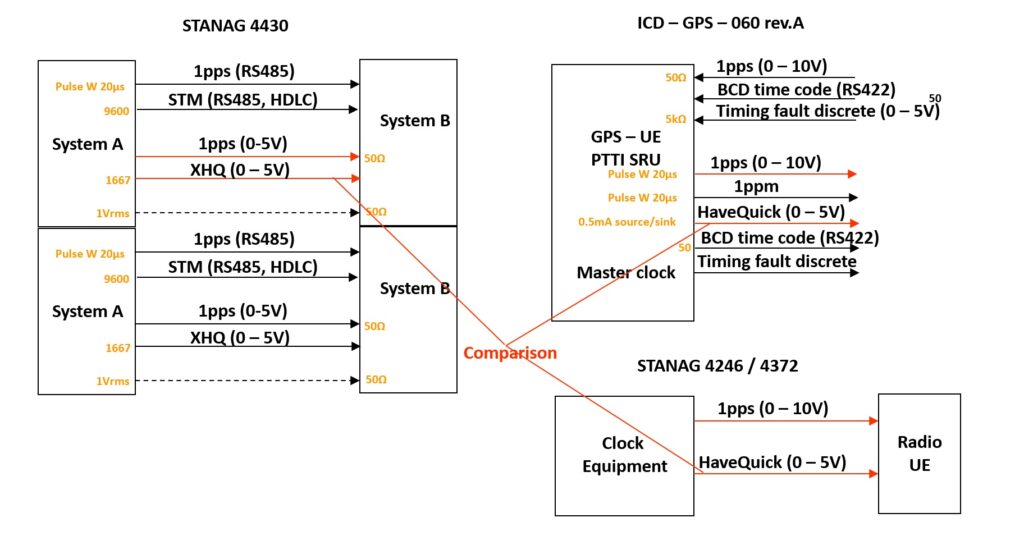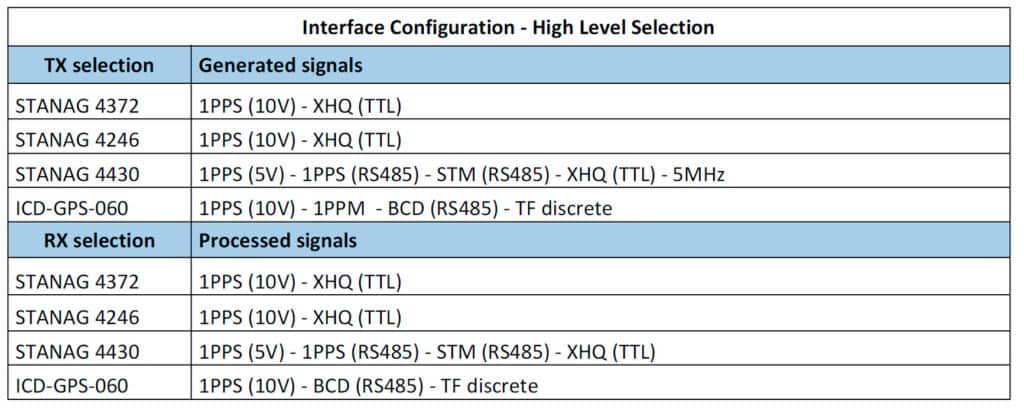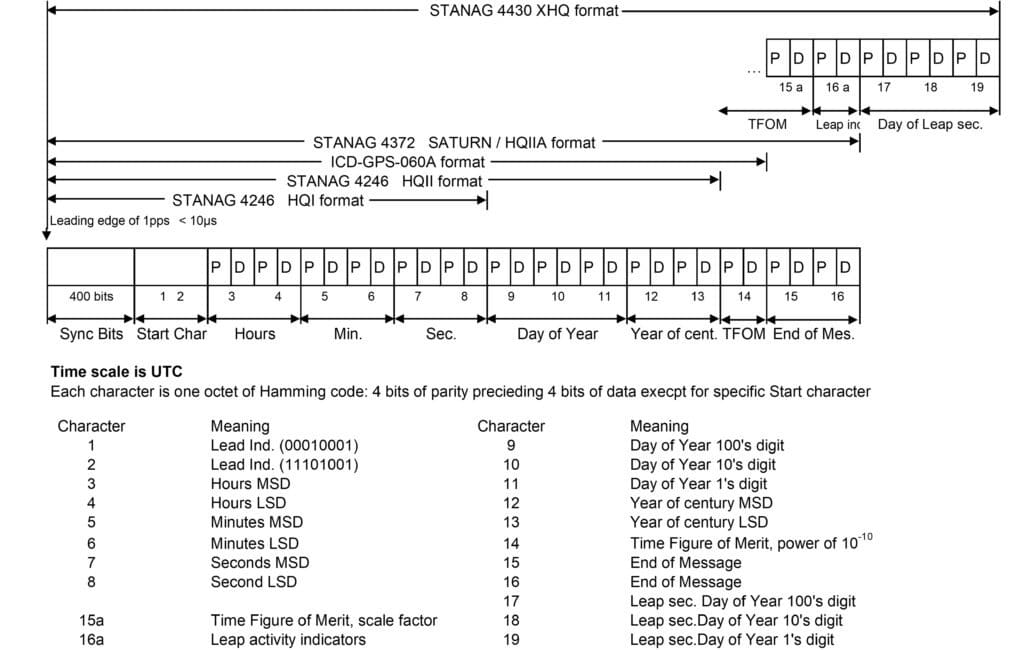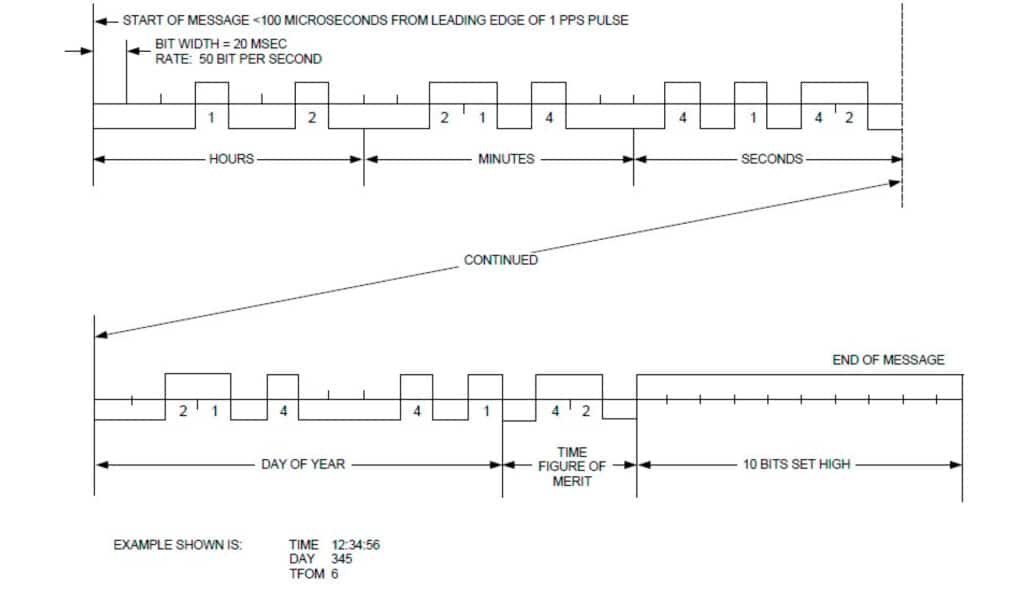SecureSync® STANAG / HaveQuick Synchronization
Technical & Application Notes
Introduction
STAndard NAto Agreement is a set of minimal specifications aiming at providing interoperability between military equipment deployed by NATO nations. These specifications include performances, interfaces, and functionalities of various systems.
In the area of communications, several STANAGs include specifications related to time and frequency. Time and Frequency signals are indeed vital to allow reliable operation of highly protected radio communication networks or links.
As a leading provider of Time & Frequency systems for military forces, Orolia offers high accuracy, high reliability and flexible solutions to synchronize communication systems in compliance with the relevant STANAGs.
This technical note provides a brief description of the main time and frequency related STANAGs as well as the description of their implementation as an option board for SecureSync Master Clock system.
STANAG Principles
The main Time & Frequency STANAGs are:
- STANAG 4246 for Have Quick UHF radio (second release)
- STANAG 4372 for SATURN UHF radio, include Have Quick modes
- ICD-GPS-060 timing interface for GPSGlobal Positioning System is a navigation satellite system. See also User Equipments
- STANAG 4430 interface for precise time and frequency transfer (generic)
The principles of synchronizing signals, for the various STANAGs, are pictured below:

STANAG Content
These STANAG basically are based on two main types of signals:
- 1 pulse per second (1 PPS), as an exact phase referenced to UTC
- Time of Day (ToD), as a time scale, according to different time code formats (Have Quick, HQII, HQIIA, XHQ, BCD, STM). Some of these formats include a synchronization quality indicator field (XHQ includes the Time Factor Of Merit – TFOM – indicator)
- Frequency signal, in general 5 MHz signal
- Other signals can be also present, like alarms (Time Fault discrete)
Electrical format of these signals can be chosen, depending on the considered STANAG, amongst the following:
- 1 PPS : 0 – 5V (TTL) ; 0 – 10 V ; RS485
- ToD : TTL ; RS485
The following table provides the correspondence between STANAGs and related signals:

Time of Day (ToD) Formats
The ToD content, for the different formats, is as below:
STM Frame Format

Note: in each digit, octet and word, the least significant bit is transmitted first
STANAG 4430 & HaveQuick Format

BCD Format

Orolia Implementation Principles
Orolia implementation of STANAG interfaces is based on the combination of SecureSync, as high performance and modular MasterClock System, and a set of STANAG option boards that fit into SecureSync. These STANAG modules operate as input (STANAG signals are used as a time reference for SecureSync), and as outputs (SecureSync provides STANAG compliant time & frequency signals).

Comparative Module Interface Table
Output option modules provide the following configurable interfaces as outputs:

Input option modules provide the following configurable interfaces as synchronization reference inputs.

Configurations

Additional Notes
Up to 6 input or output modules can be integrated in one SecureSync chassis. Modules 1204-10, 1D, 24 and 25 provide all the signals on the different pins of a single DB25 connector. The pin-out of this connector is identical to the pin-out of the STANAG option which is available for former Epsilon Clock 2S and 3S products.
CONTACT US for more information.
